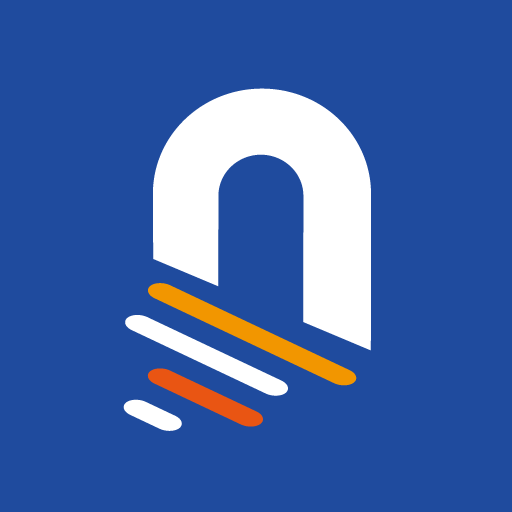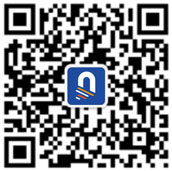Author: ZeLong Wang Editor: Tong Bee Source: PANews
After two years of development, Tencent’s new mobile game “Let’s Catch Monsters Together” went online in April. Within a few hours, it generated 1.5 million users, and reached to the first place in Apple App Store’s Top Free Apps in a short period of time. Similar to “Pokemon Go”, which gained extreme popularity two years ago, AR is included in “Let’s Catch Monsters Together” to enhance players’ immersive experience and emotional connection, which resulted also in popularity. Nevertheless, there is a new feature in this game that causes its fame: blockchain.
However, the fact is that Tencent’s try on “blockchain game” is nothing but a flash in the pan. Experts in this industry told PANews that simply copying the gameplay of traditional mobile games in a blockchain system cannot make it a “blockchain game”. The reasons why Tencent did not choose to be “all in” blockchain in regards of this game lie in the limit on digital currency flow putting in or extracting out of the game, as well as the bars being too high for a real blockchain game.

AR on one side, blockchain on the other
In the promotional campaign of this game, the blockchain feature was intentionally emphasized. However, after PANews’ experience on this game, the result is that strictly speaking, “Let’s Catch Monsters Together” cannot be regarded as a “blockchain game”.
First and foremost, not all the characters in the game are on the blockchain. Also, this game is not on the public blockchain, but instead it is on Tencent’s own “League blockchain”; compared to public blockchain, in which all transactions are open and traceable, in this “League blockchain” only the nearest 10 transactions are displayed and renewed.
The fate of this “League blockchain” is determined by Tencent as well as its “allies”. On Sep. 15th 2018, Tencent ceased the operation of “QQ Pets”; if you can still recall how “pets” in this game vanished, then you may have a new thought on the claim that “Characters on the blockchain will never disappear.”
“Blockchain does not play the main role in this Tencent’s game; blockchain is more like the additional feature, or prop.” said Vincent, the founder of DappReview, during the interview with PANews. The CTO of Magnachain Zhang JinSung provided similar views, as he believes that in “Let’s Catch Monsters Together”, blockchain is more like a decoration, or hype.
Vincent further stated that this also reflects some problems that commonly exist in blockchain games (mainly the Dapp ones), which are: 1) the over-strong attributes on financial operation and opportunism; 2) insufficient development time: it took 2 years for Tencent to develop “Let’s Catch Monsters Together”, but the part on blockchain still received many criticisms, let along many other blockchain games who have less development time; and 3) product life cycles being too short: two months is already the longer one.
On the other hand, Zhang JinSung stated that simply copying the gameplay of traditional mobile games in a blockchain system cannot make it a “blockchain game”. The real blockchain games should have private keys controlled by players, as well as support on-chain transactions between players.
Why Tencent did not choose to be “all in” blockchain in regards of “Let’s Catch Monsters Together”? Vincent pointed out two obstacles. The first one is the limit on currency flow putting in or extracting out of the game: According to current policy or the regulation on traditional video games, assets that players possess in the game should not and could not be converted into physical currency; namely, being “all in” blockchain will mean the “tokenization” of in-game assets, which violates the current policy of the Chinese government on discouraging and disguisedly forbidding the transactions of cryptocurrency.
The second one is the problem of entry barrier: for pure blockchain games, the system consisting wallets, private keys and coin-keeping would surely replace the original user account system; for people not in the cryptocurrency field who only want to use mobile games to entertain themselves or kill time, the higher entry level is clear to be seen, which results in the difficulty in promoting the game.
The “testing field” of Tencent’s blockchain game
A year ago, during the product launch of “Let’s Catch Monsters Together” on Apr. 23rd 2018, Tencent emphasized that they will utilize the blockchain technology to introduce the so-called “Exclusive Cat”. Up to 110.5 billion of different “Exclusive Cats” will be included in the game, in which 640 thousand of “Generation-zero” cats will be released first, and their generating rate will be controlled by the system based on real-time need in game operation. Each of these cats are one of a kind; players can breed them based on their will, and also preserve them with the blockchain technology -- namely, them will never disappear.
From the white paper published by Tencent in regards of “Let’s Catch Monsters Together”, in this game blockchain mainly serves as the tool to solve the transparency and safety issues that currently exist in the video game industry.
Blockchain is integrated in the game process the following six aspects: 1) data credibility, 2) verified ownership of props, 3) actual function of blockchain props in the game, 4) the furthering and eternal recording of game process being realized by blockchain ledger, 5) safety protection, and 6) media node.
Considering its relatively sophisticated display and the strong attribute of social function, Tencent’s “Let’s Catch Monsters Together” apparently is more enjoyable compared with traditional encrypted cat games who also feature “Exclusive Cat”.
When talking about how to remove these obstacles in regards of linking games with blockchain extending from the topic of Tencent’s try on blockchain game, Vincent mentioned that on one hand, the balance between being on-chain and off-chain should be properly managed: game contents regarding design fairness, transparency and assets transactions can be on-chain, while the rest don’t necessarily need to be; on the other hand, methods such as accounts trusteeship and unifying ID can be introduced to further lower the entry barrier (compared with concepts of public or private key, addresses, and wallets).
Furthermore, Zhang JinSung also stated his view from two aspects: technology-wise, people in this industry will have to strive on optimizing the capability of bottom public blockchain, as well as on allowing the developing parts within blockchain games to match the ordinary games developers’ habits in developing; thought-wise, people in this industry should probe on what kinds of value and significance can blockchain generate after being placed in games.
Both experts agreed that the ongoing enhancement on small parts such as Layer 2, Lightning Network and side blockchain provides significant values to optimizing developers’ experience, lowering difficulty, and reducing expenses during the developing process. Zhang JinSung further indicated that the gradual maturing of Defi provides higher values to facilitating blockchain developers doing fundraising as well as promoting transactions and circulations of in-game assets.
Global major companies getting involved under low profile
In fact, many well-known global video game companies have noticed on combining blockchain technology in their products.
Vincent further indicated that, under the surface, many major video game companies have been exploring on blockchain. One example is Mythical Games, a studio formed by former Activision Blizzard and Walt Disney employees; with members of former development teams behind “Call of Duty” and “World of Warcraft”, this studio has come up with products with better enjoyability and display.
In addition, PANews also took notice on some other major companies’ move on blockchain:
NetEase came up with “Fushitungbao”: compared with traditional in-game assets that can only circulate within one server, this asset can do cross-server circulation. It is put under the blockchain address that each player possesses, in hope to protect players’ in-game assets as much as possible.
Ubisoft now has a strategic innovation lab, who is try to use multiple private blockchains to run a game similar to “My World”: “Hashcraft”. The consensus mechanism similar to PoW is introduced in this game, as players can prove their working efforts through building and expanding their own islands, which may allow this game to run without the centralized server in the end.
As for Sony and Microsoft, their respective home console platforms “PlayStation” and “Xbox” will work together along with a third-party company to explore on probing blockchain on the management of users’ digital rights, which may lead to improvement on the situation of players’ in-game assets disappearing due to numerous reasons.












